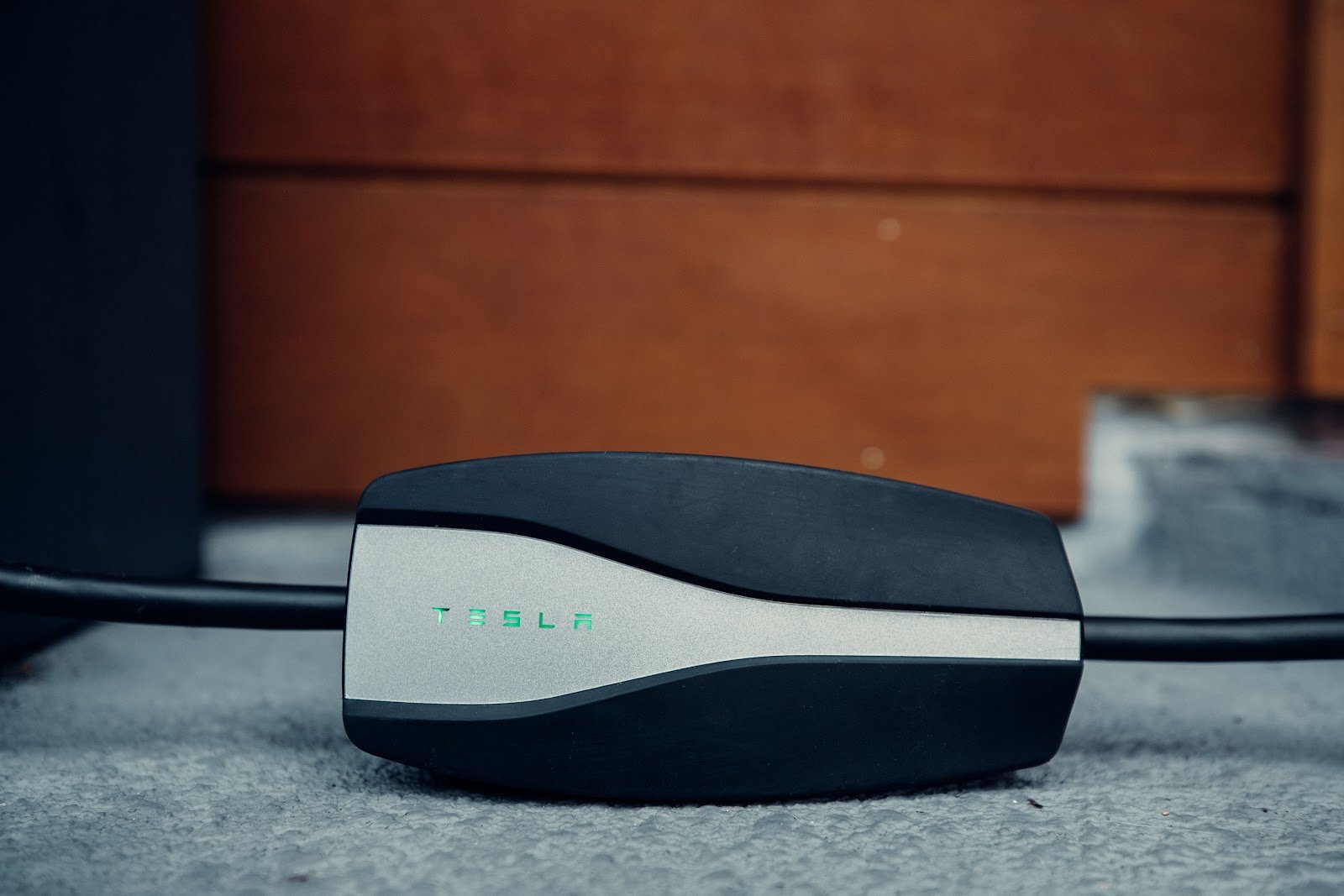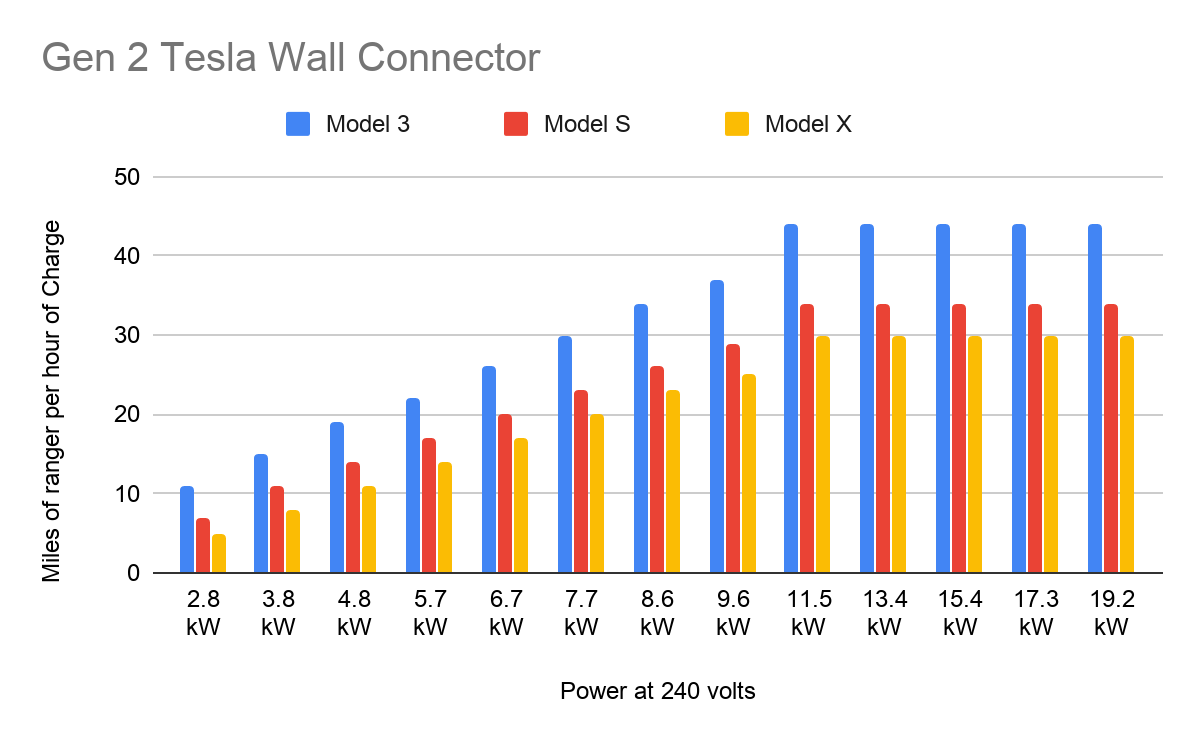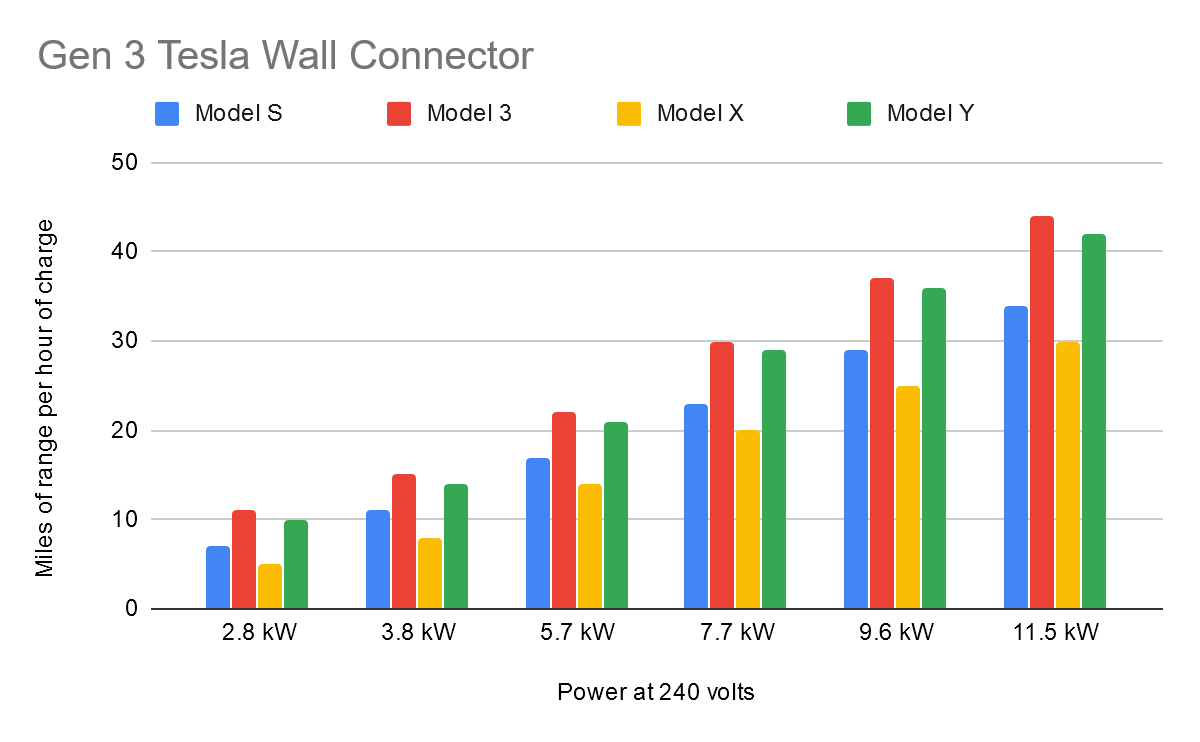There are quite a few chargers on the market these days to help you power your Tesla at home, but if you’re looking to save money or upgrade from an older system you need to know your options. Every new Tesla these days comes standard with a NEMA 5-15 adapter 120V socket respectively. The 14-50 adapter is no longer included in the purchase of a Model 3 but it is only a $35 purchase.
The 5-15 model will allow you to plug into standard 3-prong home outlets, but it’s for on the go or overnight at home, charging at only 2-4 miles of range per hour. While that might be great in an emergency or if you don’t drive too often, 16-24 miles of range for an overnight charge is wholly insufficient for most people.
By comparison, the included NEMA 14-50 plug is far quicker at charging, typically taking only 10-12 hours to fill your battery from 0 to 100%. The disadvantage to the 14-50 is that it requires an uncommon type of outlet, this is usually for household appliances such as clothes dryers. So, you will probably need to install a dedicated circuit and outlet for the 14-50 plug, unless you happen to have an extra one lying around in your garage. If you do end up needing to install a new outlet, the adapter may be free but the electrician and wiring a 240V outlet will most definitely not be, ranging from $132 to $287.1
The 240V plug can cost more if you do not have an open spot in your circuit breaker and a new breaker box can cost around $1400 to $3000. These high costs can be determined by the wiring range and the placement of the box from the current circuit breaker box.

Purchasing a Wall Connector
The other option for Tesla owners is to install an official Tesla Wall Connector. This requires installing a dedicated, high amperage circuit in the home’s main circuit box and wiring the Wall Connector directly into the dedicated line instead of using an outlet plug. Both the older Gen 2 and newer Gen 3 Wall Connectors retail for around $500.2
Although Wall Connectors require direct installation into a home’s wiring they do have superior charging performance. Using a 60-amp circuit breaker, the Gen 2 or Gen 3 can charge a Tesla Model 3 at a rate of 44 miles of range per hour. Unfortunately, some models are limited in their charging capacity and cannot fully take advantage of these blazing speeds, such as the standard range Model 3 which maxes out on a 40-amp circuit breaker at 30 miles of range per hour.
What’s New in the Gen 3 Wall Connector
While it’s clear that the Tesla wall connector offers the quickest charging short of the public Tesla Supercharger stations, the Gen 3 also offers some significant upgrades and some changes from the Gen 2 wall connector.
Differences between Gen 2 and Gen 3
Power cord – The Gen 3 power cord was reduced in length from 24 to 18 ft. However, the cord is thinner and easier to work with.
Max amps – The Gen 3 puts out a max of 48 amps, compared to 80 amps from the Gen 2. The Gen 3 uses a maximum 60-amp circuit breaker, whereas the Gen 2 used a maximum 100-amp circuit breaker to generate their respective amperage. However, the more efficient Gen 3 offers the same charging speeds as the Gen 2.3
New Features of Gen 3

The Gen 3 has built-in 2.4GHz Wi-Fi, allowing for remote configuration of the wall charger to take full advantage of whatever amperage circuit you run it on. It also allows for intelligent load sharing for up to 16 charging devices. Wi-Fi also means the charger benefits from Tesla’s typical online firmware updates.4

Should You Invest in the Gen 3 Wall Connector?
If you need to drive your car frequently, Gen 3 offers the best at home charging-rate. Not only can you fully power up your car overnight, but you can also charge over 80 miles on the car in under two hours’ time.

Just keep in mind, this wall connector will not work out of the box. It needs to be hardwired into your home and will require a junction box put into the wall, which may require an electrician. So, most people spend $1200 on an install for any level 2 charging EV, yet this is higher than the charger’s listed price. The price is dependent on if have an available port in your circuit box if, so then the cost is determined by how feet of wire you need to install to the charger’s location. Yet, there is hope with available federal tax credits that offer to be up to $1000 to help encourage at-home charging stations and the purchase of EV vehicles, yet each state’s tax credits do differ and might not cover the full costs of the project. In the end, the Gen 3 is worth it because of its reliably fast charging speed, the WiFi mobile remote ability, and its sleek aesthetic that will fit right into your home.
If you are considering investing in the Gen 3 Charger, and are interested in exactly how much you save and spend on every charge, you can use the free Optiwatt application to do the personalized math for you. Optiwatt monitors your at-home Tesla charging costs and gas savings using your exact utility rates and local gas prices, so the guesstimating is entirely removed. Also, if you'd like to learn more about how much charging will cost you, check out the article: How Much Does it Cost to Charge a Tesla.


